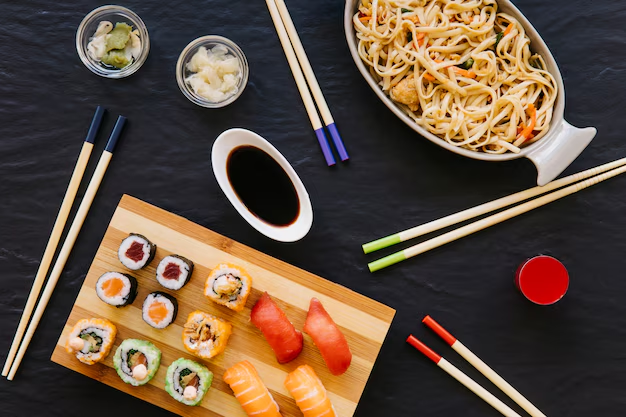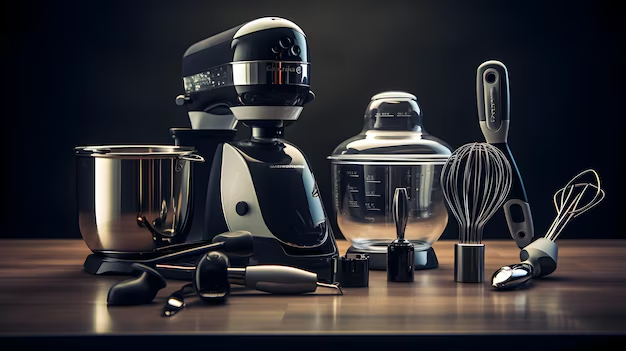Elevate Your Plating: Essential Gadgets to Make Your Food Look Beautiful
In today’s visual world every meal can be a work of art with the right tools. From food presentation gadgets that turn veggies into delicate spirals to plating tools, there are so many kitchen gadgets that make food look as good as it tastes. If you want to add a pro touch to your meals, check out spiralizers, food shapers and plating brushes. Not only do these gadgets make home cooking look better but they’re also available with all the other essentials when you shop kitchen gadgets online. And while you’re shopping for kitchen essentials don’t forget to check out other fun categories like pet supplies for every member of the household. So, grab some inspiration and get ready to turn your meals into restaurant quality presentations from your own kitchen!
1. Why Food Presentation Matters
In the world of social media and cooking, food presentation is everything. Beautiful plating appeals to the eyes and elevates the taste, our brains often interpret the aesthetics in food as a reflection of the flavor. With the right food presentation gadgets and tools, you can turn any dish into a work of art that could be in a fine dining restaurant. This article covers the essentials, spiralizers, food shapers and plating tools that will take your food styling to the next level.
2. Spiralizers in Food Art
A spiralizer is a food presentation gadgets that turns vegetables like zucchini, carrots and cucumbers into long, curly ribbons. These colorful spirals add a touch of elegance and creativity to any plate, perfect for salads or as a garnish for main courses. Vegetable spiralizers are great for healthy eating as they are a low carb pasta alternative, so your food is both beautiful and nutritious.
Tips for Using a Spiralizer:
- Use firm vegetables like zucchini or sweet potatoes for better spirals.
- Try different blade settings for different thicknesses and shapes.
- Layer spirals with other garnishes for a fancy look.
3. Vegetable Peelers and Carving Tools for Details
Vegetable peelers and carving tools are small but mighty gadgets for adding extra details to your plating. With a bit of imagination, you can turn carrots into ribbons, cucumbers into curls, and even add patterns to fruit and vegetable skins. Carving tools allow for intricate designs, personality and a bit of fun to your dish.
Common Uses:
- Ribbons for salads and garnishes.
- Fruit carving.
- Vegetable shapes.
4. Food Shapers and Specialty Molds for Custom Shapes
Food shapers and specialty molds let you shape ingredients into precise shapes to add a pro touch to your plating. These work well with ingredients that hold their shape like rice, mashed potatoes or dessert mousses. With food molds you can stack layers, create symmetry or add fun shapes to your presentation.
Ideas for using food shapers:
- Shaping rice into circles or squares for main courses.
- Using cookie cutters to cut out fun shapes from soft fruits.
- Shaping mousse or panna cotta for beautiful dessert plating.
5. Precision Plating Tools: Spoons, Tweezers and Brushes
Professional chefs use plating tools like spoons, culinary tweezers and brushes for their precision. These tools let you place tiny garnishes accurately, add sauces in intricate designs and create layered textures on the plate. Tweezers for food help with placement, while brushes let you paint sauces or glazes onto your dish.
Tips for using precision tools:
- Use a small spoon to drizzle or dot sauces.
- Brush strokes with sauces add visual interest to flat plates.
- Tweezers are perfect for placing delicate herbs and microgreens.
6. Food Rings and Stacking Molds for Layering
Food rings and stacking molds let you create structured layers in your dishes. By using circular molds, you can stack ingredients like layered salads or tartare which would otherwise spread out on the plate. Stacking adds height, dimension and makes the plate more beautiful.
When to use food rings:
- To create layered desserts like trifles or tiramisu.
- For main courses that need clean lines like tuna tartare.
- To stack salads with ingredients that are different in color and texture.
7. Garnishes: Edible Flowers, Microgreens and Seeds for Accents
Garnishes are the final touches in food presentation, adding color, texture and sometimes flavor. Edible flowers, microgreens and seeds are perfect for garnishing as they add to the dish with minimal effort. Edible flowers like nasturtiums and violets add a pop of color, microgreens a fresh delicate accent.
Ideas for garnishes:
- Scatter edible flowers on desserts or salads for natural beauty.
- Use microgreens for a green garnish on savory dishes.
- Sprinkle sesame seeds or chia for texture and crunch.
8. Squeeze Bottles for Saucing Techniques
Squeeze bottles are one of the simplest yet most versatile plating tools for saucing techniques. They let you apply sauces in dots, lines and patterns with ease, perfect for decorative details on the plate. With squeeze bottles you can create symmetrical designs or even write messages, especially for personalized dessert plates.
When to use squeeze bottles:
- For dessert sauces like chocolate or berry coulis to add flavor and visual interest.
- For dot patterns or lines to frame the main elements of the dish.
- For different colors of sauces to create an artistic look.
9. Edible Gold Leaf and Dusts for the Wow Factor
Want to add some extra luxury to your presentation? Edible gold leaf and dusts are the way to go. A little bit of edible gold or silver leaf can turn desserts and cocktails into high-end treats. Decorative dusts like cocoa or colored sugars are great for accenting dessert plates.
How to Use Edible Gold Leaf and Dusts:
- Add gold leaf to chocolates or pastries.
- Use cocoa powder to create a border on dessert plates.
- Dust with colored sugars or edible glitter to add sparkle to baked goods.
10. Go for It at Home
With so many food presentation gadgets to choose from, from spiralizers to edible garnishes, it’s never been easier to make food look good. Whether you’re cooking for a special occasion or just having fun, these tools will make a big difference. Try adding one or two of these plating tools to your kitchen and make beautiful dishes with minimal effort. Don’t be shy – after all, food is art!





